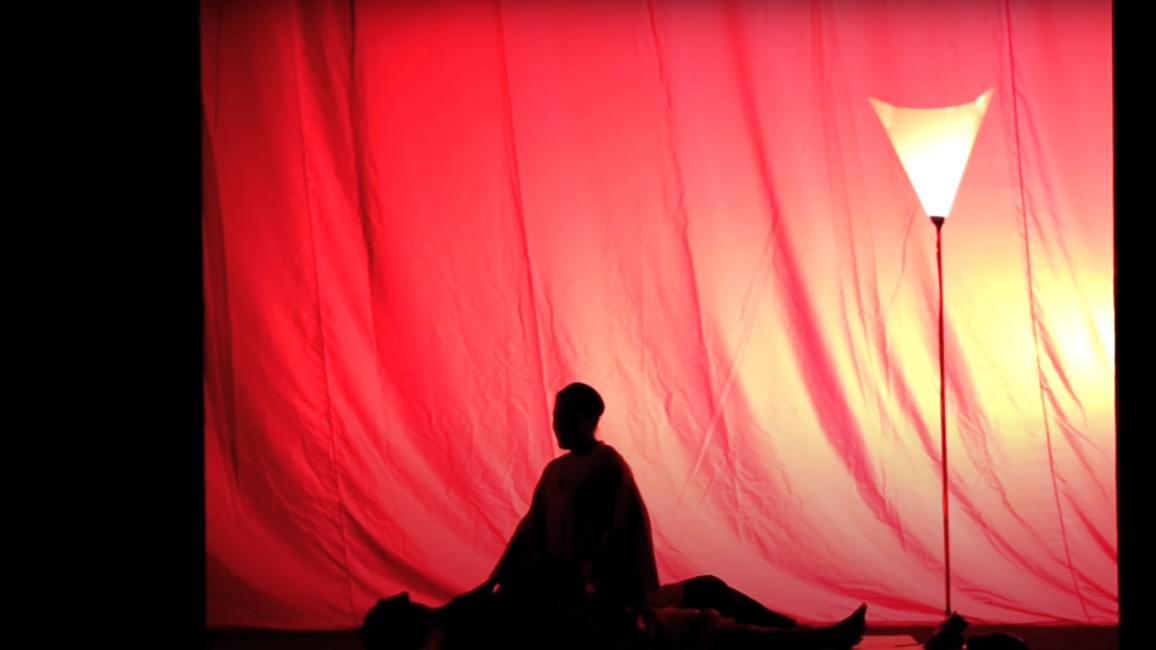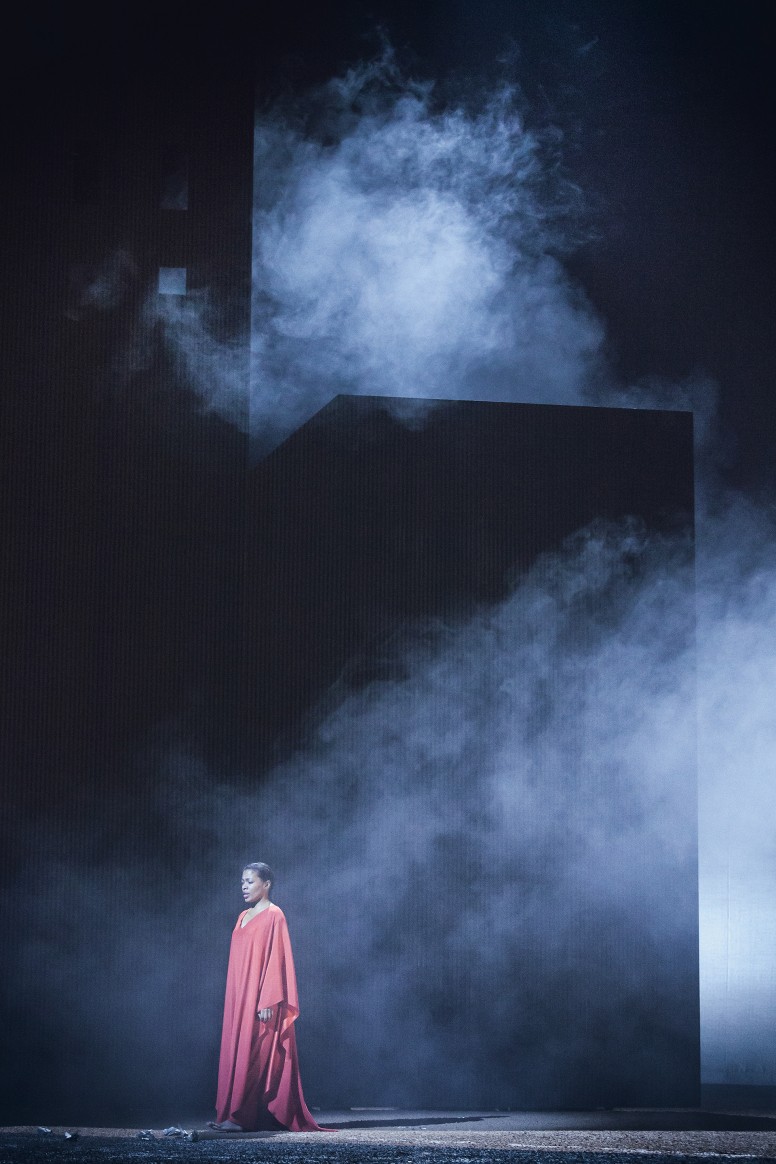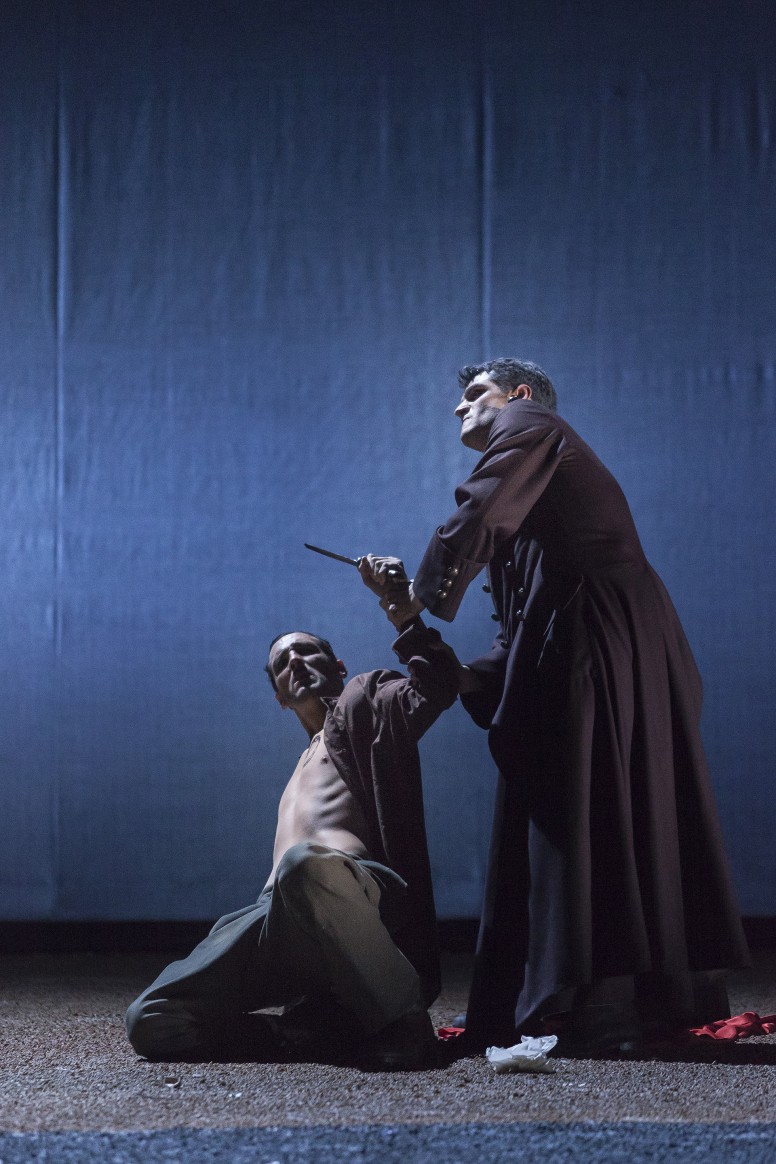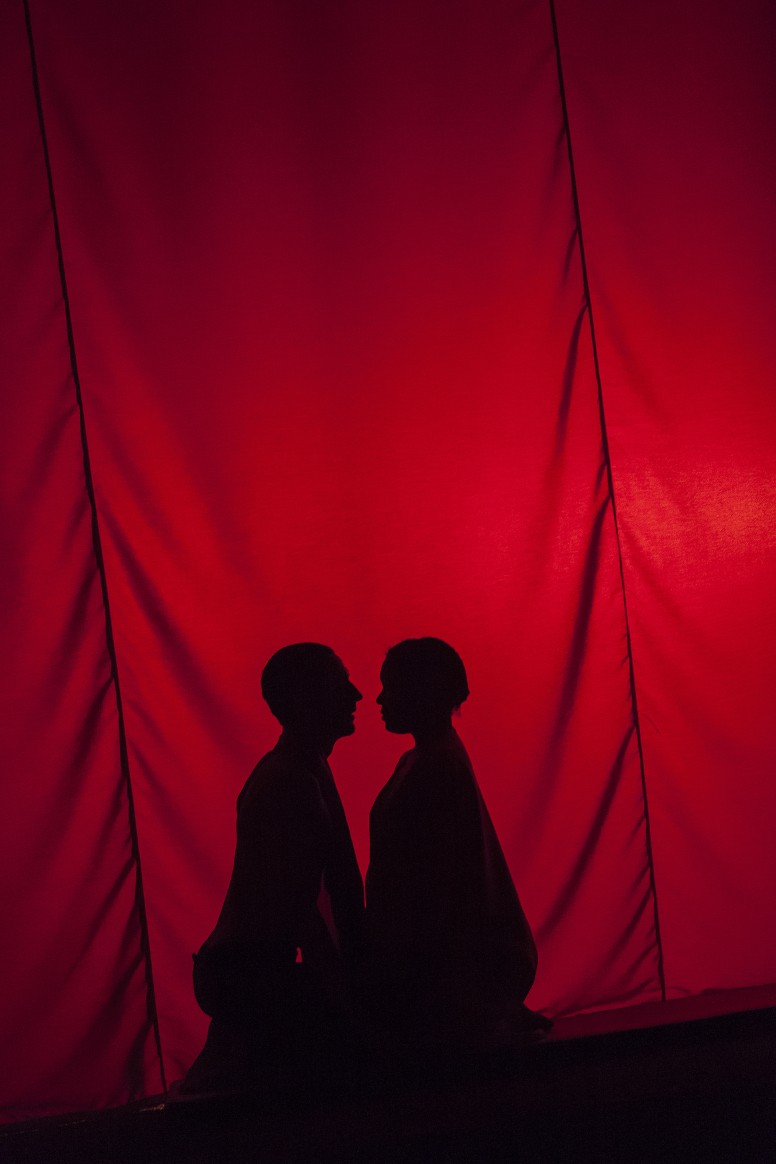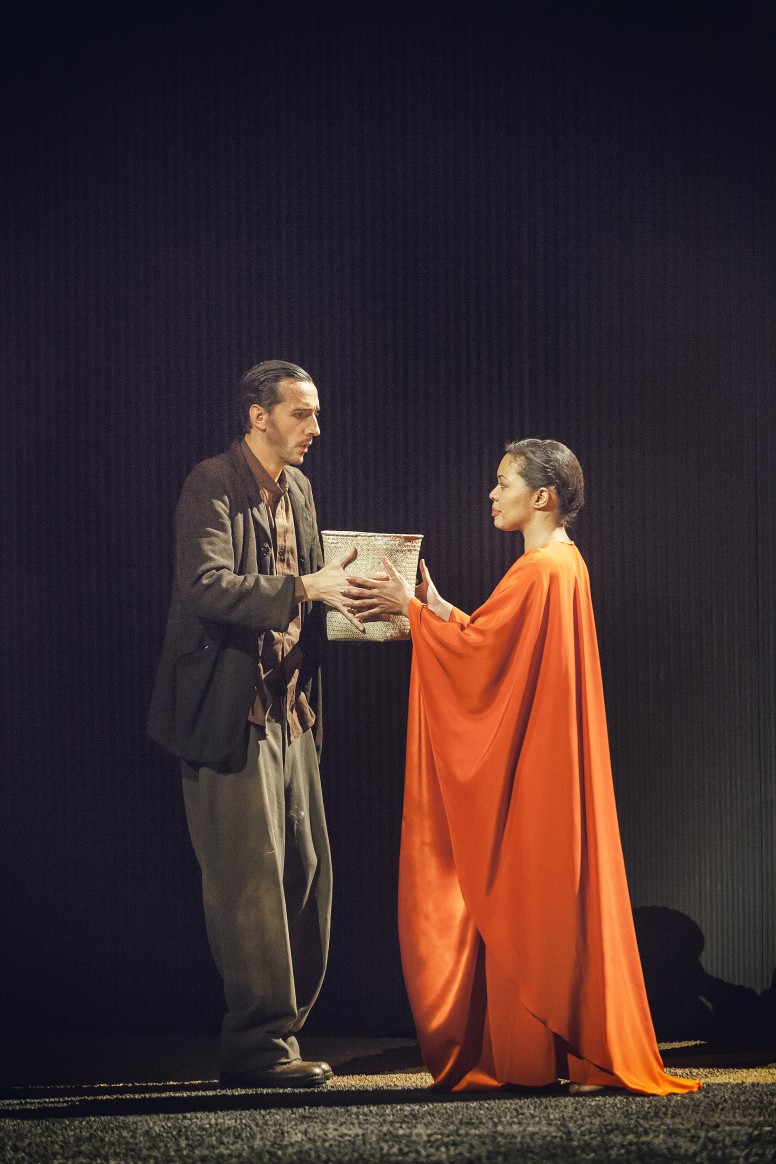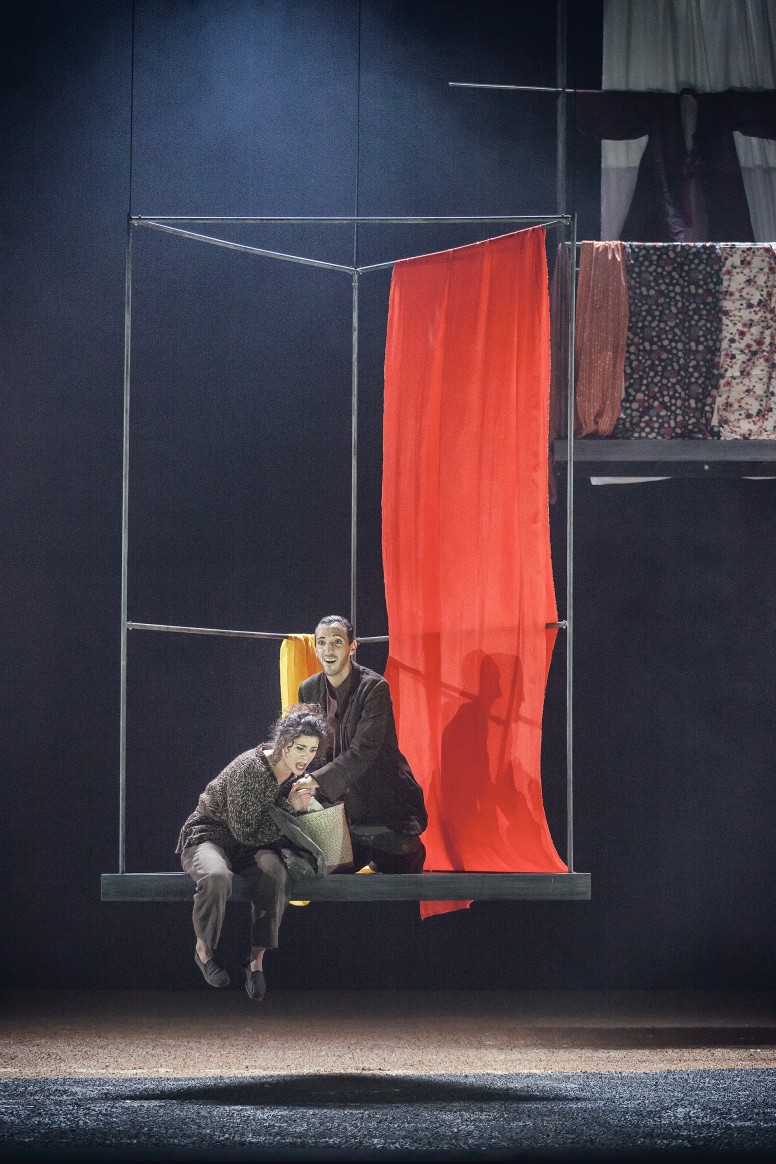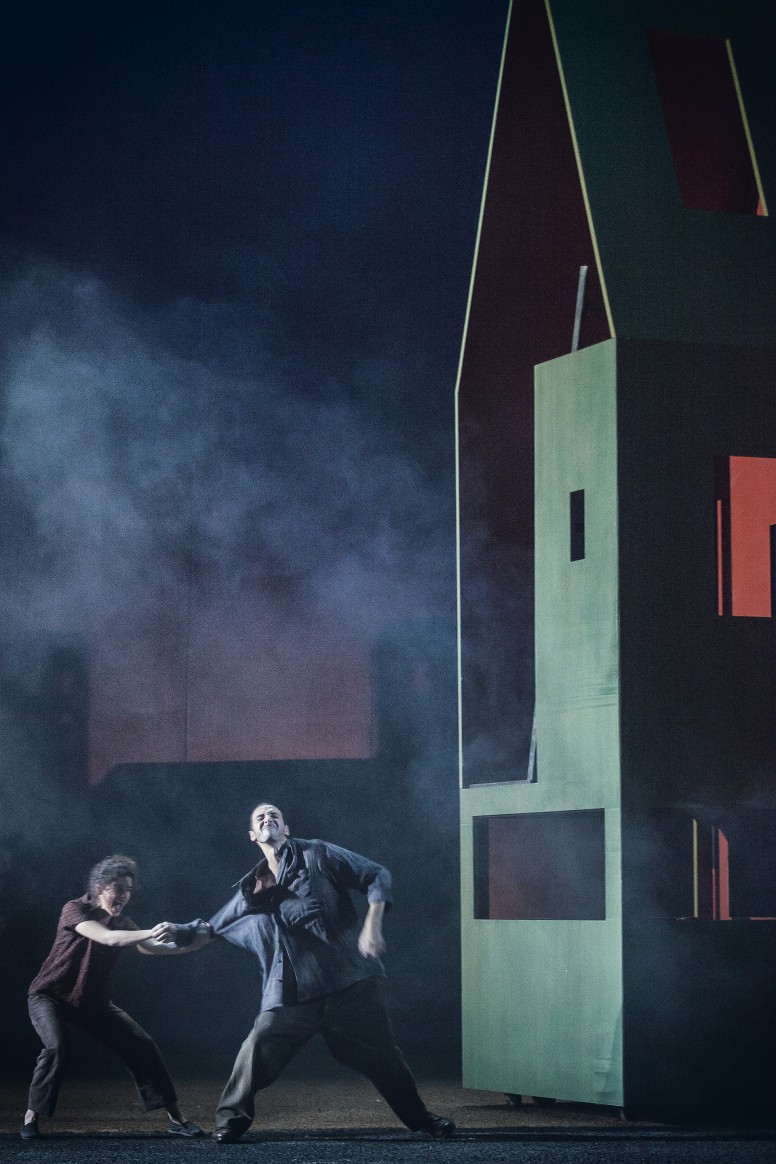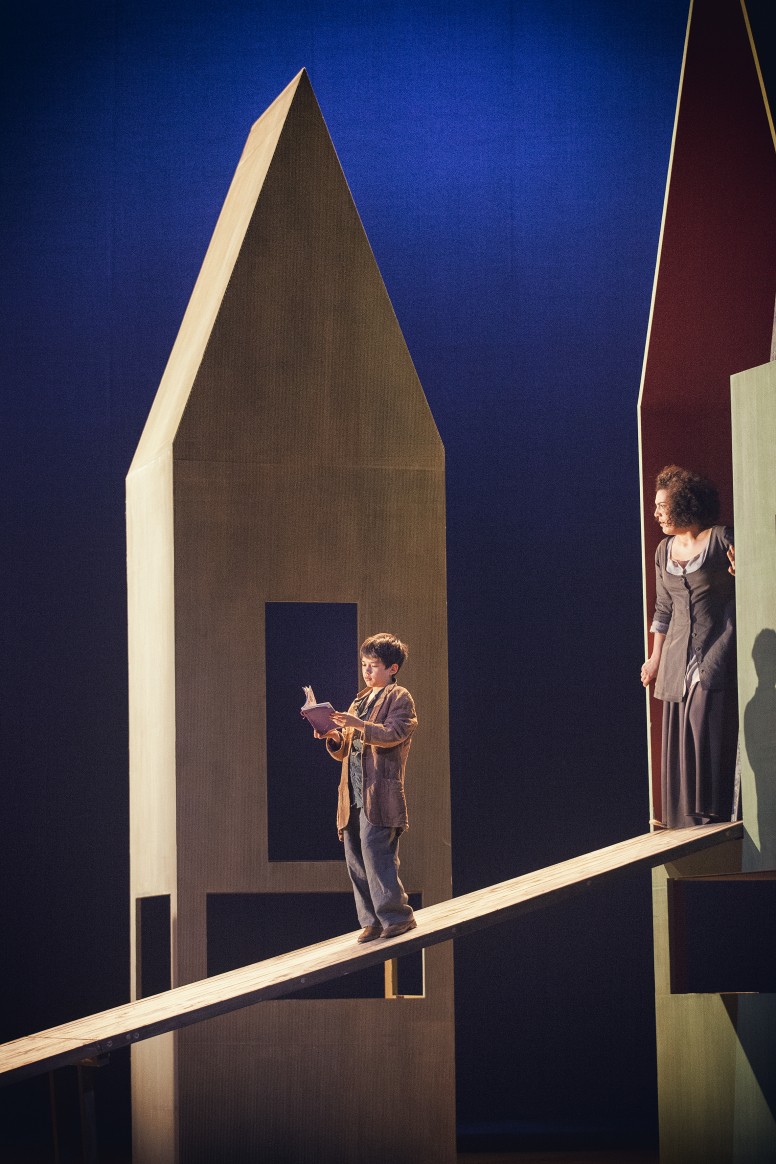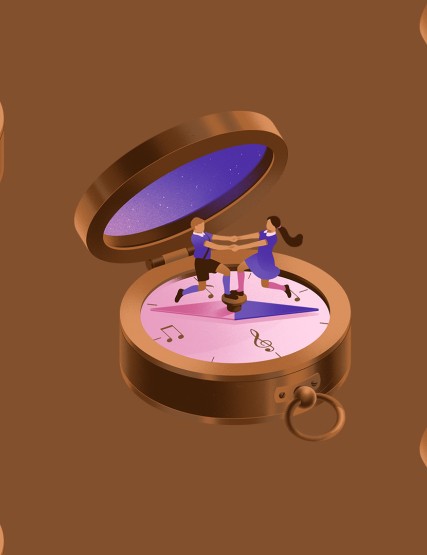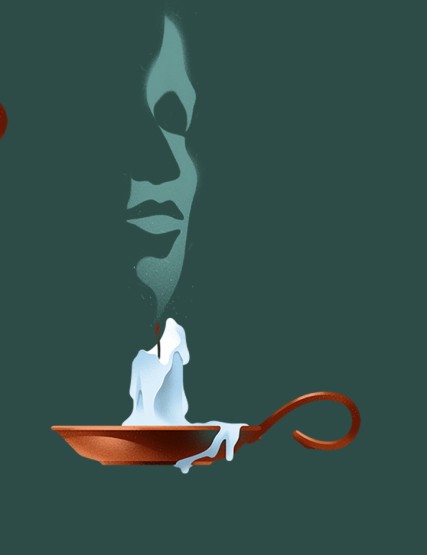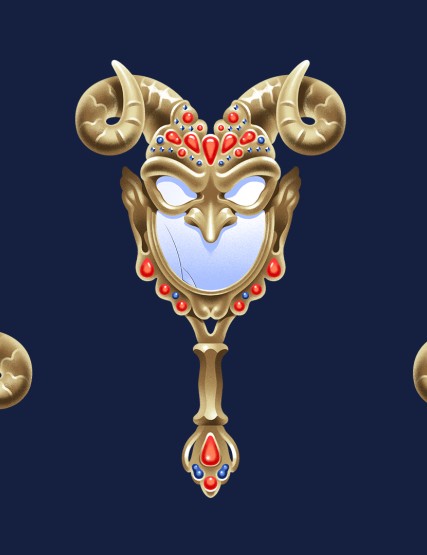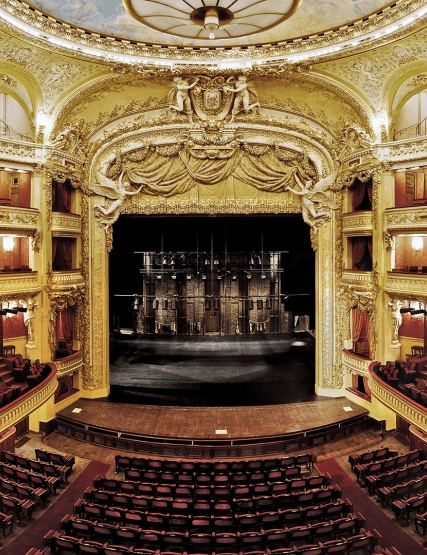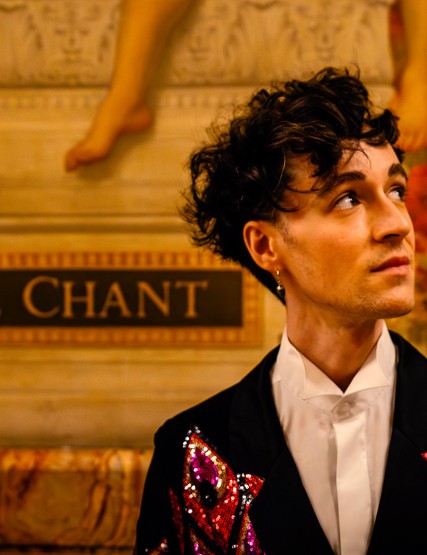Chamber Opera by Xavier Dayer with a libretto by Alain Perroux based on the scenario from the film by Kenji Mizoguchi.
Premiered on 20 March 2015 at the Opéra de Rouen Haute-Normandie.
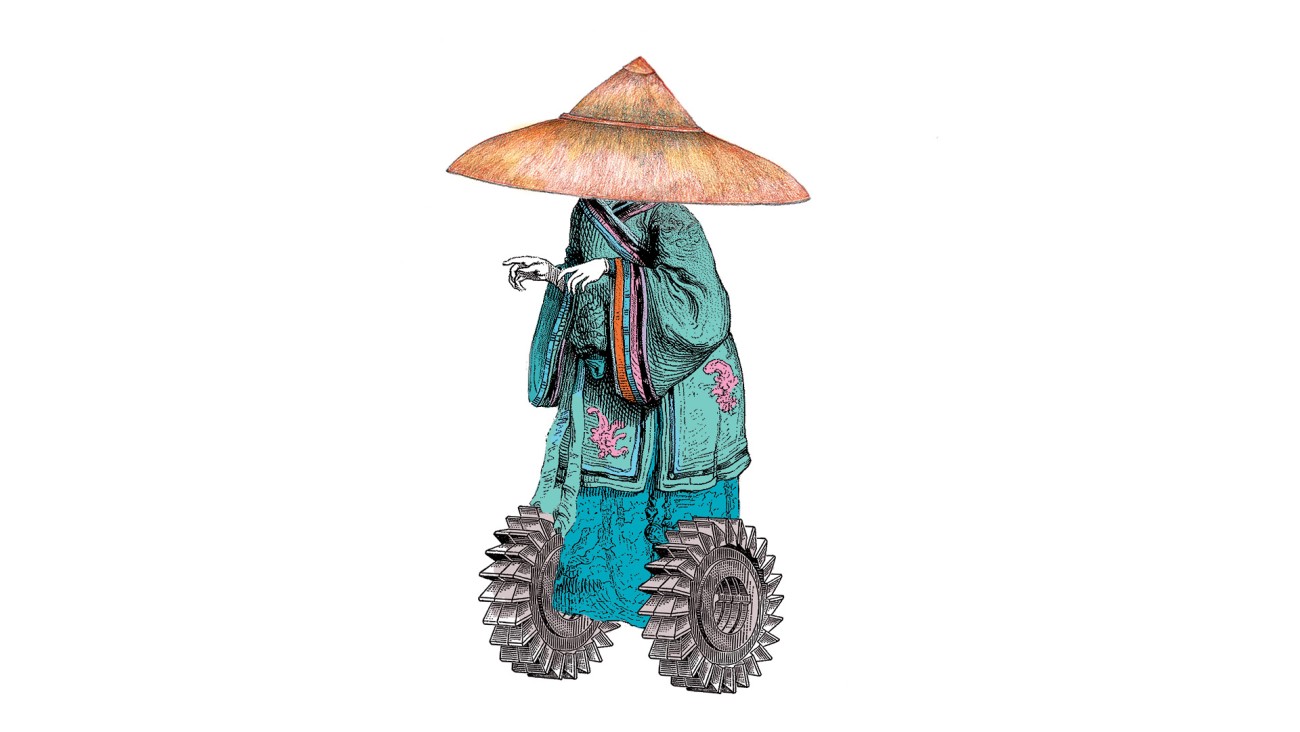
After exploring the many possibilities of musical theatre, the Swiss composer Xavier Dayer chooses the initiatory tale and revisits, together with Alain Perroux, the subject treated on the screen by Kenji Mizoguchi. Les Contes de la lune vague après la pluie (Ugetsu in English), a 1953 dreamlike film based on two stories by Ueda Akinari, is an adaptation that endeavors to revive the blueprint of Japanese poetry.
In 16th century Japan in the grip of civil war, two poor men set off in search of recognition. Their couples are shattered by separation. At the core of the work, an artist comes across a bewitching princess and is caught into the trap of his own vanity.
In a fantastic atmosphere, destinies intersect to compose a moral tale staged by Vincent Huguet and conducted by Jean-Philippe Wurtz.
Presentation of the work by Agnès Terrier 40 minutes prior to each performance.
Performance duration: 1h30 without intermission
Prologue
In the village of Kitaomi, Genjuro tirelessly shapes potteries with the help of his wife, Miyagi, who cares for their son, Genichi. Ohama, Genjuro's sister, lives with Tobei whose only dream is to become a samurai. When rumors of impending war come to the village, the two men believe that their time has arrived and decide to go to town despite their wives' disapproval.
Part One
On their return, Genjuro showers his family with gifts while empty-handed Tobei tries to share his dream of glory with Ohama. But the two women further oppose their delusions of grandeur in which they only see vanity and danger. In vain. The two men's stubbornness and the irruption of war in the village hasten everybody's departure for the town of Omiso, which they reach by traveling on the misty waters of an ominous lake. They encounter a drifting boat whose passenger warns them: pirates lurk on the water, there is danger everywhere. After this warning and Miyagi's fear, Genjuro decides to take her and Genichi back to the shore so they can return to the village.
At the market of Omiso, Genjuro and Tobei hold forth to customers. A noble lady and her nurse buy potteries from them and ask Genjuro to deliver them to the Kutsuki palace across the hill. Then the three newcomers part: Tobei runs off with the money earned at the market to buy an armor and a spear, Genjuro is dreaming at a cloth merchant's and forsaken Ohama becomes a prostitute.
At the Kutsuki palace, Genjuro is received by the lady of the market, who turns out to be princess Wakasa, and her nurse, who tells him of the dramatic story of the family that lived there. Genjuro is gradually bewitched by the mysterious woman who seduces him. From now on, he is to devote his life to her.
Part Two
Tobei goes to the commander of the samurais, exhibiting the head of an enemy general which he claims he chopped off with his spear. The commander is convinced that Tobei is incapable of such a feat, yet he rewards him by making him a samurai. Genjuro went back to the cloth merchant to bring a present to Wakasa. On his way to the palace, he meets a man who tells him that Wakasa is but the soul of a dead woman and invites Genjuro to follow him in order to "take him back to reality."
In his new samurai uniform, Tobei celebrates the realization of his dream and goes to the brothel. The prostitute he meets there is none other than his wife, Ohama. After the shock from this reunion, Tobei admits to having lied: he did not chop off the general's head but stole it.
Back to Wakasa's, Genjuro is not the same, disturbed by what the man told him. The princess notices it and when she asks him to accompany her to "her country", he confesses that he has a wife and a child and must leave her. Attempting to take him back to her couch, she is terror-stricken to discover on his body that he has been exorcized. She plans to take him toward death with the help of her nurse. Genjuro catches hold of his sword and attacks the two women, causing the destruction of the palace, before losing consciousness.
In the ruins of the palace, Genjuro is awakened by the commander of the samurais who criticizes him for having stolen the sacred sword he is still holding. When Genjuro replies that he got it from Wakasa, the samurai retorts that she died long ago.
Crossing the lake, Tobei and Ohama return to their village, disillusioned but together again. When Genjuro comes to the village, he is delirious with joy to see Miyagi again, who prompts him to rest. On waking up, Tobei and Ohama are there but no trace of Miyagi, whom Genjuro calls so that she joins in this reunion. Ohama tells him that after having been abandoned by the lake, Miyagi was killed by soldiers but that Genichi survived. Thus, the woman he saw the day before was but a ghost. Genjuro laments his wife's death but her voice can soon be heard to comfort him.
Epilogue
Life slowly returns to normal in Kitaomi. Encouraged by Miyagi's benevolent ghost, Genjuro goes back to his potter's wheel.
CINEMA LE BALZAC - projection le lundi 11 mai à 20h
L'Opéra Comique profite de l'occasion pour s'associer au cinéma Le Balzac et vous faire (re)découvrir le film réalisé par Kenji Mizoguchi en 1953, Les Contes de la Lune vague après la pluie, inspiré de deux contes de Ueda Akinari.
La projection sera précédée d’une rencontre avec le metteur en scène de l'opéra, Vincent Huguet, et la chanteuse Judith Fa.
Film en version originale, noir et blanc, 1h37.
Au Cinéma le Balzac, 1 rue Balzac, 01 45 61 10 60
For Contes de la lune vague après la pluie the Opéra Comique has invited students from the Ecole Supérieure des Arts et Industries Graphiques Estienne in the public spaces of the theater from 10 to 20 May 2015. During the night of Thursday 7th, 26 students from the Ecole Estienne busied themselves in the public spaces of the Opéra Comique, leaving Japanese-inspired traces of their presence...
How is it possible to offer visual elements that echo the Japanese world of these tales contrasting with the decoration of marble, gold and mosaics of the the opera house?
During a workshop supervised by illustrator Annabelle Buxton, 13 students had the idea of placing Asian patterns, fragmented landscapes, Japanese-inspired masks and accessories on the architectural and ornamental elements.

In order to transform the place in a modern and playful spirit, they designed detachable supports (stickers, suspensions, light projections) as well as a set of minimalist shapes and pure colors (sea green, black, fluorescent orange). Enjoy the Japanese-inspired patterns as prankish sprites in a corridor or hanging from a balustrade or a chandelier. Discover the familiar figures of the theater transformed by unexpected masks. And let your reflection in the mirrors guide you through the imagination of Contes de la lune vague après la pluie.
Musical direction, Jean-Philippe Wurtz • Staging, Vincent Huguet • With Taeill Kim, Majdouline Zerari, Carlos Natale, Judith Fa, Luanda Siqueira, David Tricou • Orchestra, Ensemble Linea
See all the castMonday, May 18, 2015 - 8:00pm
Tuesday, May 19, 2015 - 8:00pm
1:30 - Salle Favart
50, 40, 30, 18, 10, 6€
Cast


















Orchestra, Ensemble Linea
Production, Opéra de Rouen Haute-Normandie
Co-production, Fondation Royaumont, Opéra Comique
With the support of the SACD - Fonds de création Lyrique and Arcadi Île-de-France
The commission to Xavier Dayer is backed by the Fondation Arthur Honegger under the aegis of the Fondation de France
With the support of Pro Helvetia, and the Fondation Beaumarchais
Partnership




